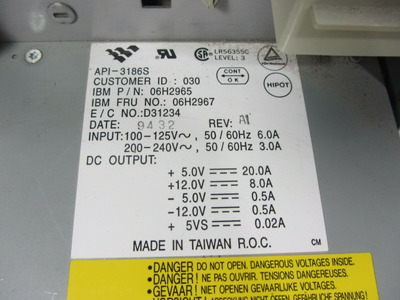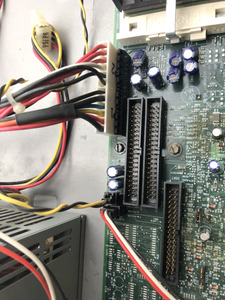Tonight I tried to connect the standard AT power supply to the computer. A series of things happen that never repeat themselves, as if there were random mistakes. I'll explain:
Turning on from the power supply switch (not from the one on the case which obviously has no effect on an external AT power supply) the keyboard LEDs light up for a moment then go off immediately and the keyboard is as if it were not connected, it shows no signs of life and no led lights up.
I turned it on and off at least 50 times to understand the combination of errors but each time the keyboard behaves in the way I have described.
The monitor that I connect to the computer instead exits standby but after 3/4 second it returns to standby as if the signal did not reach it anymore. Not all the times, because 2/3 times I managed to display a message indicating the name of the video chip but then the computer did not move from there. Once it even started as if it worked well, did the ram count and then stopped with "178 system error VPD not available". This only happened once out of 50 on and off that I did.
Other things I noticed: the CPU heatsink always becomes lukewarm and removing the whole ram makes the following series of beeps: beep-mute-beep-beep-beep-mute-beep. from the times when the computer seems to be stationary and the monitor is in standby by pressing the original power button which is on the case and which is connected to the motherboard by two wires it turns the led back on the case and lets the monitor go out of standby but without see nothing on video. sometimes the power LED on the case lights up and then goes off after about 3 seconds without turning on again, sometimes it stays on.
For safety I measured the voltages at the output of the power supply connector and I measured:
-12,15v
+ 12,27v
+ 5,05v
-5,39v
What worries me is the reality of all these states that I have described, turning it on and off 10 times different things happen.

